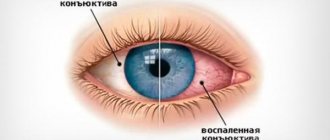Low-grade fever is a body temperature maintained at 37-37.9 degrees. These indicators are generally considered to be a deviation from the norm. But a more or less stable natural body temperature of 36.6 is maintained only in adults.
Children tend to fluctuate the thermometer within 1-1.5 degrees. And this does not always indicate some kind of deviation. If you find that your child has a temperature of 37, then you need to be wary. Repeat measurements periodically and monitor the condition of the little patient.
Your observation and attentiveness will help the doctor make a correct diagnosis and, if necessary, prescribe treatment.
Hyperthermia in children
An increase in temperature to 37.6-37.9 degrees in a child may be a sign of an infectious or non-infectious disease. Also, this indicator can increase with some physiological provocateurs.
In many cases, an increase in temperature becomes a protective reaction of the body. In young children, it occurs due to improper care (overheating or staying in a hot room).
If you suspect that your child has a temperature of 37.5, then take a measurement. Use only a working thermometer (a mercury thermometer is considered more accurate than an electronic one, and the readings of infrared devices are completely mistrustful). Temperature measurements should be taken in the same place at regular intervals.
Remember that fluctuations in indicators may depend on the time of day, food intake, and physical activity. Data vary especially among children.
Reasons for women
In addition to the above circumstances, common causes of low fever in women include pathologies of the endocrine glands. In most cases of hormonal disorders, after diagnosing thyrotoxicosis, the disease is confirmed. Men suffer from this pathology much less frequently. Vegetative-vascular dystonia caused by thyroid disease in women is accompanied by an increase in body temperature in the evening.
At a certain period of the menstrual cycle, low-grade fever can be observed due to physiological reasons against the background of normal health. Ovulation (the release of an egg from the follicle) is accompanied by several characteristic symptoms. At this point, women experience slight body heat, swelling, irritability and moderate pain in the lower abdomen. Many girls planning a pregnancy try, thanks to low-grade fever, to determine ovulation by taking daily basal temperature measurements.
During pregnancy
Many expectant mothers worry when they notice 37.5 °C on the thermometer. Doctors note that during pregnancy, in most cases, this condition is a physiological norm. If there are no other warning symptoms (cough, severe weakness or headache), then there is nothing to worry about. Meanwhile, a high temperature can signal the development of the disease. A pregnant woman should seek help if, in addition to fever, she experiences bleeding, pain in the lower abdomen, dizziness or nausea.
Reasons for rising temperature
All the reasons that a child’s body temperature has increased can be divided into three subsections: infection, non-infectious disease and physiology. Depending on these, the child may have additional signs.
Infectious childhood diseases
Hyperthermia in a child is most often provoked by infectious diseases. In this case, additional symptoms of the disease may be present: runny nose, cough, rash, headache.
Viral infections in children with strong immunity do not require treatment, with the exception of symptomatic care.
The body independently produces antibodies, forming protection. This is what temperature is. Its increase contributes to the death of pathogenic microorganisms. Pediatric infectious diseases include:
- ARVI, influenza;
- ENT pathologies (pharyngitis, tonsillitis, rhinitis, sinusitis);
- gastrointestinal infections (pancreatitis, intestinal flu, colitis, gastritis);
- lesions of the urinary tract (pyelonephritis, bacteriuria, urethritis);
- abscesses of the skin and tissues;
- injuries and long-term non-healing skin lesions.
Less commonly, the reasons why a child has a temperature of 37-37.5 are: toxoplasmosis, helminths, burcellosis, tuberculosis, HIV, hepatitis of viral origin.
Non-infectious nature of hyperthermia
A child’s temperature may increase due to other pathologies occurring in the body. They are the most difficult to recognize, since additional symptoms are absent or not clearly expressed.
- Tumors (malignant or benign. Often it is the increase in temperature to 37.5-37.8 in children that forces parents to show the child to the doctor, since there are no other symptoms of the appearance of a tumor.
- Endocrine pathologies (diseases of the thyroid gland, adrenal glands) are often detected in children during adolescence. At an earlier age, parents may mistake one or another symptom of a deviation for an individual characteristic of their child’s body.
- Blood diseases (anemia, changes in ESR, leukocytosis) can only be reliably determined by the results of laboratory tests. Additional symptoms are usually vague or mildly expressed.
- Autoimmune diseases (arthritis, lupus erythematosus, Crohn's disease, goiter) can develop in a child at a young age (up to 9 months) or over the years with thermometer readings up to 37.7 degrees.
- Consequences of the infection. In this case, all symptoms of the disease disappear, but hyperthermia within 37.2 - 37.4 persists for another few days to a month. This condition usually does not pose any threat to the health and life of a small patient.
Physiology
If a baby has a temperature of 37, then probably the parents simply overheated him. In children of the first two years of life, thermoregulation is not yet sufficiently developed. The body cannot control changes in external temperature and respond correctly to them. In a warm room, the temperature of hotly dressed children inevitably increases. It can reach 38 degrees and even exceed this value.
An increase in temperature in young children (up to 2-3 years old) may be associated with teething. Pieces of food get into the gums, which provoke the growth of bacteria. The body, trying to protect itself, increases body temperature. These signs will disappear on their own when the tooth erupts.
It is normal for a newborn to have a temperature of 37. Most new dads and moms don't know this. They begin to panic and frantically sort through the baby's first aid kit when they discover that their baby's body temperature has risen slightly. Doctors assure that up to 37.5 degrees there is no need to worry or panic.
Some children may react with low-grade fever to certain medications. This often happens when using antibiotics, immunomodulators, painkillers and hormonal drugs.
Psychosomatic causes of fever are more common in children under 4 years of age than in adults. It is believed that the child himself provokes the fever, trying in this way to manipulate his parents and attract attention to himself. As soon as the desired goal is achieved, the symptoms of low-grade fever will go away on their own.
Causes of infectious type
Most often, temperature readings increase with a cold. In this case, other symptoms arise in the form of:
- nasal congestion;
- difficulty breathing;
- runny nose;
- dry cough or with sputum discharge;
- rashes on the skin.
Some childhood diseases are not severe. This may include chickenpox or measles.
With the presence of a focal infection for a long time, the symptoms gradually disappear and become familiar. Therefore, the only sign of an unfavorable condition is low-grade fever. In such a situation, it is quite difficult to find the cause on your own, so the help of a specialist is required.
A long rise in temperature can be observed with:
- ENT diseases in the form of tonsillitis, sinusitis, otitis, pharyngitis;
- dental diseases in the form of the presence of carious formations;
- diseases of the digestive system in the form of gastritis, colitis or pancreatitis;
- inflammatory diseases of the urinary system;
- inflammatory processes in female and male genital organs;
- abscess at injection sites;
- long-term non-healing ulcers in elderly patients and patients with diabetes.
If a person’s temperature rises to 37 degrees constantly, the doctor will ask you to undergo an examination, which includes:
- general blood and urine analysis;
- consultation with specialized specialists such as an otolaryngologist, gastroenterologist, dentist, gynecologist;
- performing computed tomography or magnetic tomography;
- performing ultrasound diagnostics;
- carrying out an x-ray examination.
A constant temperature may indicate other pathologies. But they are diagnosed much less frequently.
This includes.
- Toxoplasmosis.
The patient exhibits symptoms very rarely. Experts say that all cat lovers suffer from such a parasitic infection. Toxoplasmosis is considered very dangerous when the first infection occurs during pregnancy. This process threatens the development of congenital pathologies in the baby. Characteristic symptoms are a slight increase in body temperature, damage to the visual organ and digestive system. Treatment is carried out using antiparasitic medications. For diagnosis, it is necessary to undergo a special immunological test to determine antibodies. - Brucellosis. If the temperature lasts a week or even more, then this particular illness may be observed. It is most often found in people who work on farms and veterinarians.
Symptoms manifest themselves in the form of periodic fever, pain in joint and muscle tissues, decreased auditory and visual function, and confusion.This disease is not dangerous to humans, but can lead to adverse consequences in the form of changes in the mental state and motor system.
- Other parasitic infections.
If a patient has a fever every evening, then perhaps the cause is the presence of worms in the body. When internal organs become infected with parasites, an inflammatory process can occur for a long time. And often a temperature of 37 degrees is the only sign of a problem in the body. To check for the presence of worms, it is necessary to undergo an examination, which consists of taking a general blood test for ESR and eosinophils, and analyzing stool for the presence of worm eggs. If an infection is detected, the doctor will prescribe anthelmintic medications. - Tuberculosis.
Many patients believe that this disease is quite rare nowadays. But if the temperature stays at 37 for a long time, then perhaps the reason lies precisely in this. Most often, this disease affects medical workers, young children, students and soldiers. Tuberculosis is a bacterial infection that affects a person's lungs. To diagnose the disease, a Mantoux test and fluorography are given annually. The main symptoms include increased fatigue, weakness, decreased or lack of appetite, sudden loss of body weight, high blood pressure, pain in the lumbar region, blood in the urine, cough and shortness of breath.
Symptoms and additional signs
When a child has a temperature of 37.3, it is necessary to pay attention to additional concerns. If the baby already knows how to speak, then be sure to find out if he has any painful sensations.
Often this condition is accompanied by a headache, but since the child cannot explain it, parents say there are no additional signs of the disease. But a headache combined with a fever can lead the doctor to think about a certain disease.
Low-grade fever in children is accompanied by the following symptoms:
- general malaise, weakness and drowsiness;
- decreased appetite;
- increased sweating;
- dry mucous membranes, pale skin;
- nervousness;
- increased breathing and heart rate, tachycardia.
Low-grade body temperature
Subfebrile is a body temperature that exceeds 37.1, but does not rise above 38. If the temperature remains 37, a doctor’s consultation is necessary, since an extremely large number of both pathological and normal processes in the human body provoke such a temperature indicator.
Fever 37 without symptoms occurs in people of different ages, different professions and places of residence - there are no particular differences in this. An interesting fact is that in women, low-grade fever occurs three times more often, with the peak increase occurring during reproductive age. Recently, there has been an increasing tendency towards manifestations of low-grade fever in adults and children.
Low-grade fever is also distinguished between infectious and non-infectious. The first type of fever is provoked by infectious pathologies, but the non-infectious type of low-grade fever is recorded if the patient has tumor pathologies.
It is the infectious type of subfebrile condition that is most common
Doctors first of all suspect certain infectious diseases, pay attention to the presence of tuberculosis, and in the absence of the above diseases, look for a focal infection
What to do if you have hyperthermia?
You should think about using medications only when the thermometer exceeds 38 degrees and continues to move upward.
If a month-old baby has a temperature of 37, then do not rush to give him antipyretics. Try removing a layer of clothing from your baby first. After 30-40 minutes, repeat the measurement.
The temperature may drop slightly. But if this does not happen, and the thermometer remains at 37-37.1, then in this case there is no need to use antipyretics.
If low-grade thermometer readings persist for 3 days or more, then you should definitely show the little patient to a doctor.
Examination and diagnosis
The fact that the child’s temperature is 37.2-37.4 should prompt parents to think about basic tests. For an examination, contact your pediatrician. Tell your doctor about all the nuances of the problem. First, the doctor will conduct a physical examination.
If during it signs such as a sore throat, ears, enlarged lymph nodes, tonsils or adenoids are detected, then the baby probably has a banal viral or bacterial infection. We can say that the prognosis for them is predominantly favorable.
When the doctor doesn’t see anything like this, but the child seems quite healthy outwardly, additional diagnostic procedures will have to be done.
- History taking
The doctor examines the child’s health and finds out whether the patient has chronic diseases or risks of hereditary pathologies. Perhaps the child has often suffered from pneumonia and is prone to diseases of the respiratory system.
- Laboratory tests: general blood test, biochemical, antibody
Such a study will help determine the condition of the body as a whole, as well as find out what infectious diseases the child has suffered (based on the developed immunity). It may be determined that right now there is an acute stage of some pathology (based on the number of antibodies). A urine test can show whether there are abnormalities in the urinary system.
- Instrumental diagnostics: ultrasound, x-ray, fluorography, ECG, tomography
These examinations are prescribed if necessary and can be carried out in combination or selectively. With their help, the condition of a certain organ or system (heart, gastrointestinal tract, lungs, bones, brain, and so on) is studied.
- Visiting specialists
Neurologist, gynecologist (for girls), allergist, immunologist, oncologist, physiatrist, infectious disease specialist.
- Aspirin test
It is carried out only in older children. Its essence lies in the use of aspirin according to a certain pattern. By the body's reaction, you can determine the nature of hyperthermia (infectious or not).
Pathological conditions
If a person’s temperature rises to 37 in the evening, this may be an alarm bell. There are many pathological causes for this condition, but they all usually have additional symptoms. Busy people leading an active lifestyle may not even notice them.
Colds
The most common symptom of a cold is an increase in temperature. In this way, the human body tries to cope with the infectious agent. It is known that viruses die when the thermometer reaches 38 degrees. Therefore, you should not lower your temperature to 37. Allow your body to eliminate the infection on its own and build immunity.
Consequences of infection
Many infectious diseases occur with elevated temperature. But what if you are already healthy and it still continues to rise? This outcome is also possible. It is in the evening that the thermometer increases noticeably.
Such symptoms are especially common due to chickenpox, acute intestinal infection, and bacterial pathologies. Don't worry, your body will regain its strength in the near future. Such temperature indicators do not require the use of antipyretics. After a night's rest, they return to normal on their own.
Arterial pressure
Hypertensive patients often complain that they have an elevated body temperature. Such a natural consequence of high blood pressure cannot be called natural, but it is not entirely correct to consider it pathological. As soon as the patient brings the blood pressure back to normal, the thermometer shows lower numbers.
Hypotonics, on the contrary, have a low body temperature. For some people it drops to around 36 degrees.
It is very important not to miss the moment. But if this condition does not cause discomfort, then there is no need to try to correct it.
You will also be interested in:
Temperature 37-38 and low pressure - causes and treatment
VSD
This abbreviation stands for vegetative-vascular dystonia. Until now, this disease remains incompletely studied.
Many doctors refute it, saying that the person is dealing with chronic fatigue syndrome. One way or another, with vegetative-vascular dystonia, the thermometer readings increase. A person may note that in the morning the temperature is 36, in the evening – 37.
Oncological pathologies
It is the evening increase in thermometer values that often forces a person to turn to specialists. During the examination, tumor processes may be detected.
Benign neoplasms often do not make themselves felt with such symptoms. But the proliferation of cancer cells affects the lymphatic system, so a slight increase in the readings of the mercury meter is the first alarm bell.
Immune diseases
Any deviations in the functioning of the immune system and protective functions of the body affect temperature values. They become higher with the following pathologies:
- allergy;
- rheumatic diseases;
- blood pathologies;
- system deviations.
Many diseases develop due to increased immune function of the body, which provokes inflammation of various types.
Final Recommendations
When you find that your child's body temperature is slightly elevated, try taking the measurement a little later. Perhaps there will be no trace left of the low-grade fever. If the child was previously physically active, this could provoke hyperthermia.
Do not give your baby antipyretics if the temperature does not exceed 38 degrees and the child tolerates it well. An exception can be made for children with neurological diseases and children with birth trauma.
Be sure to consult a doctor if low-grade fever persists for 2-3 days or additional symptoms of the disease appear.
Doctor Komarovsky: The temperature just rose
If the temperature lasts for a week
The presence of a fever is usually a sign that the child's body is trying to fight off an infection such as a cough, cold, or any other irritant. The body mobilizes its defense mechanisms. The production of red blood cells increases, which helps fight infection.
This is the body's natural defense mechanism and there is often no need to see a doctor. Typical causes of fever:
- reaction to the vaccine;
- cold;
- otitis;
- urinary tract infections;
- croup;
- chicken pox;
- viral infection;
- tonsillitis.
If you start giving medications while the body is fighting an infection, it can bring not so much benefit as harm.
Why do children have hyperthermia?
According to medical statistics, it is quite common for babies and toddlers to get sick or feel unwell. The body adapts to its environment, which is why some diseases are common during the first year of life. Fortunately, most of these diseases are neither serious nor dangerous. Therefore, if you have any doubts or problems, you should seek help from your pediatrician. This will be the best solution for both the baby and the parents.
Attention! Parents should know that before they start reacting to TT above 38 degrees, they need to find out why it appeared, and not start treating the baby themselves. Only a doctor can make a diagnosis. He will prescribe the necessary treatment.











